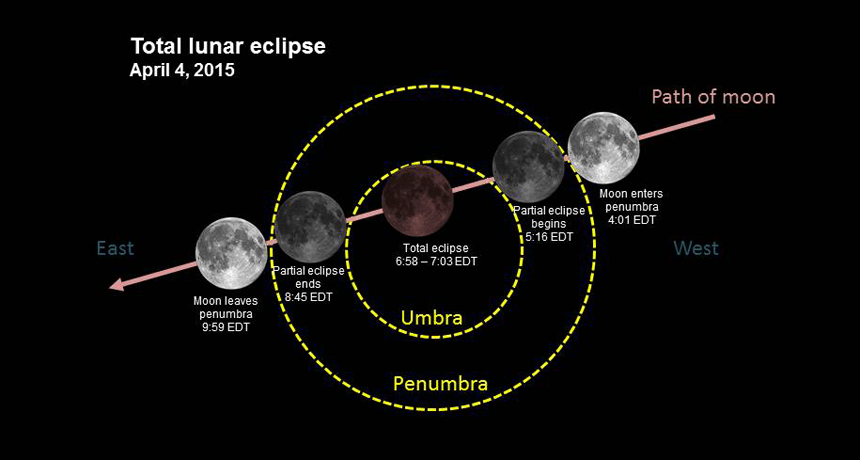Saturday’s lunar eclipse will be total, but brief

The moon will enter the outer part of Earth’s shadow (the penumbra) at 4:01 a.m. Eastern Daylight Time on April 4. Totality won’t occur until the moon passes through the umbra, or deepest part of the shadow.
Moon: G.H. Revera (CC BY-SA 3.0); C. Crockett/Science News







